A few months back, we reviewed a whole lot of framing nailers. We had a good time, but every single one of the pneumatic models would be useless were it not for the unsung hero of that particular shootout – the air compressor. Framing nailers aren’t the only tools that need pneumatic (air) power to function. Rather than running off of electricity, many tools in both the Pro and DIY arsenal run off of compressed air. Because compressed air plays such a big role in construction, mechanic, and painting applications, this edition of Training the Apprentice looks at how to use an air compressor.
[alert heading=”How to Use a Compressor: Just the Pro Tips” type=”alert-info” block=”false” close=”false”]
- Make sure your compressor has the PSI and SCFM to keep up with the tools you’re using
- Avoid gas with ethanol or use a stabilizer
- Add more hose instead of extension cords for greater reach
- Run the compressor with the drains open for 30 minutes to break in the motor
- Check the air filter frequently and replace when it gets too much build up
- Drain the tank at the end of the day to release moisture build-up
- Check the tank expiration date to avoid bursting
- Check the duty cycle and make sure it matches your applications[/alert]
[adsenseyu1]
If you’re just learning how to use an air compressor, don’t stress out. It’s really easy to pick up and once you go through the process a few times, it will seem like second nature.
How To Use An Air Compressor
Set Up
Check the Oil
Most smaller air compressors these days won’t require oil to operate, but the bigger ones probably will. No matter the size, before you fire up your air compressor, check the manual to make sure your compressor uses oil, and where it goes.
Chances are good that if your compressor does need oil to function, you’ll find the dipstick near the bottom of one of the compressor’s ends. Pull it out, and just like with your car’s engine oil, check the oil level. Add more if it’s getting low.
In some cases, such as with our 80-Gallon NorthStar compressor, the manufacturer provides an easy to read window into your oil reservoir. Compressor oil can be found at most hardware, auto parts, and home improvement stores.
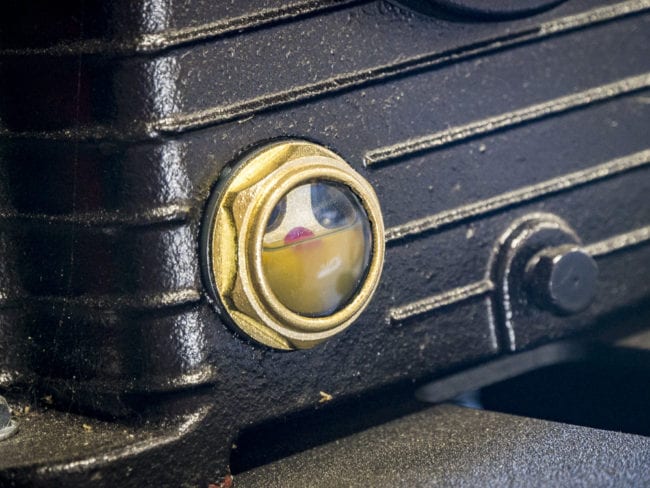
If the oil in your compressor’s oil window looks milky like this one, it’s time to change it out.
Fuel
When you’re using a gas-powered air compressor, try to use ethanol-free gasoline or something like TruFuel premix. It will help your compressor last longer. If you absolutely have to use regular gas, add an ethanol-specific fuel stabilizer like Stabil to it.
Break-in Period
Check the manual to see what kind of break-in procedure you should use on a new compressor. A good rule of thumb is to open the drains and let it run for 30 minutes.
Extending Your Reach
Avoid using extensions cords on AC models if there isn’t a working outlet near where you intend to work. Because the wrong extension cords can cause the compressor to overheat, it’s better to connect multiple air hoses together to get air to your tool.
Hoses
Attach your hose to the regulator valve. That’s the valve next to the pressure gauge on the compressor. This part ought to be pretty easy to figure out, but your hose will have a male connection while your compressor will have a female plug.
You’ll need to slide the moving part of the coupler in to allow the hose end to connect. If the compressor has air in it, some will release as you lock the hose in place and you’ll feel it push back.
On the other end of the hose, you’ll have that same type of female plug. The tool has a male stem that attaches to the adapter on the end of the hose.
Testing The Safety Valve
Pull the safety valve. You should be able to find it near the hose line. If you pull it and hear air hissing, you’re in good shape. Push the valve back in place before starting up the compressor. If you don’t hear air escaping, but can put the valve back in place, you’re probably still good.
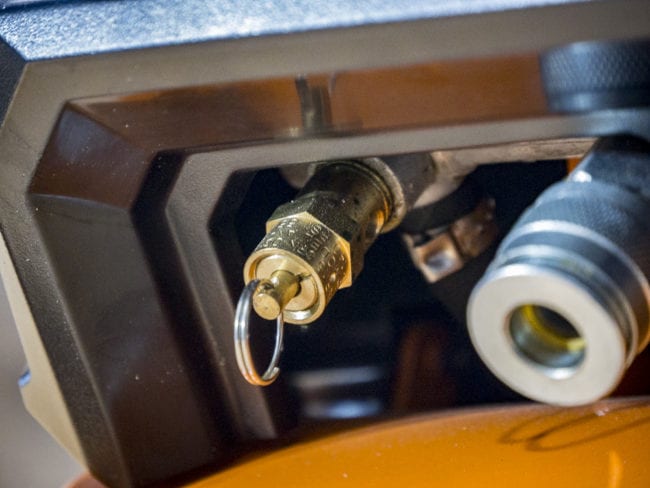
Under Pressure
Turn the compressor on and wait for the tank to fill up. You’ll know that you’re ready to get to work when the needle on the tank pressure gauge stops moving forward and the motor stops.
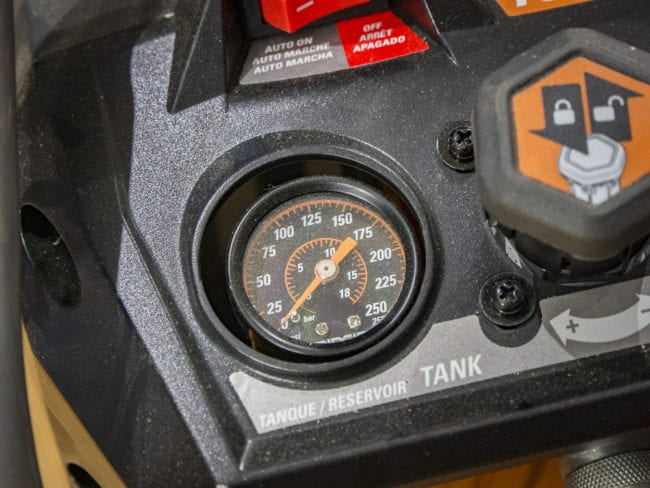
Figure out how much air pressure your tool needs to operate properly. Usually, this information will be printed on the underside of the tool. If you can’t find it on the tool, the manual will definitely have that information available. Every tool has a different PSI rating, so when you switch tools, you’ll need to adjust the hose pressure as well.
PSI isn’t the only consideration, though. You’ll also want to check the SCFM requirement, or how much airflow the tool needs. Tools like nailers just need a quick burst of air while something like an air sander requires constant air flow at a high level.
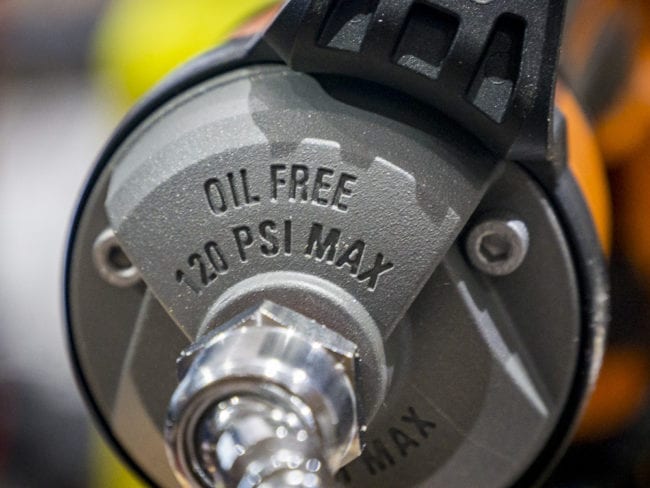
This step will require you to adjust the regulator knob. One way (usually clockwise) will give you more pressure while the opposite direction will lower it. It only takes a few seconds for the compressor to stabilize either way, so don’t be afraid to make small adjustments until you get it where you want it.
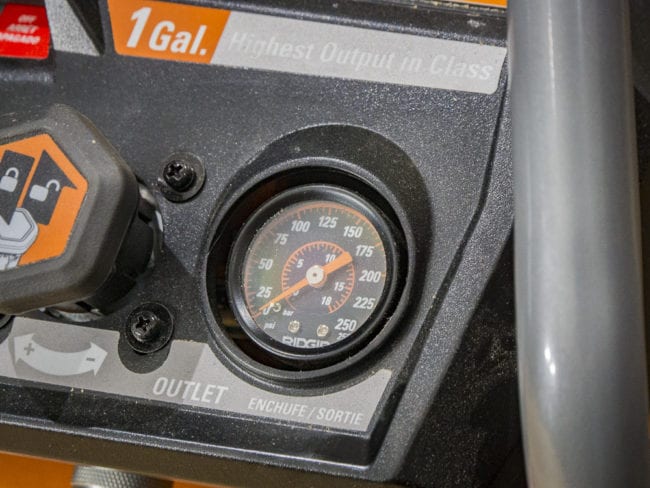
Every time you use your power tool, the tank’s pressure will drop as that compressed air goes through the hose to your tool. When the pressure in the tank drops too low, the compressor will kick back on, refilling the tank.
PSI isn’t the only consideration, though. You’ll also want to check the SCFM requirement, or how much airflow the tool needs. Tools like nailers just need a quick burst of air while something like an air sander requires constant airflow at a high level.
Duty Cycle
Every compressor has a duty cycle rating. That’s the work rate the motor can handle without risking damage. Some compressors can have a 100% duty cycle, meaning you can use it all day without a break if you want.
Others might have a 50% duty cycle – if you use it for 5 minutes, it needs a 5-minute break. Often, air compressors that have a duty cycle less than 100% will tell you specifically how much time it can run, like 10-minute intervals.
Maintaining Your Air Compressor
You need a break at the end of the day and your compressor needs to decompress as well.
Drain the Tank
When you finished your work, you’ll need to open the drain valve on the underside of the tank to release any moisture. This needs to happen after every use, as water and metal typically don’t get along for long periods of time. Where we are in Central Florida, there’s a little bit of salt that’s in the air, accelerating the rusting process. Since the rust starts on the inside of the tank, it’s not something you’ll notice until you start getting brown water coming out.
[adsenseyu2]
Turn off the compressor first. When you open the drain valve, the escaping air will also push any moisture collecting around the bottom of the tank out. Alternatively, turn the pressure regulator knob to switch off the hose’s air supply and turn off the compressor. Then, wait for the pressure to leave the compressor. You can pull the pressure relief valve to release the air faster. This won’t release the moisture, though.
Keep an Eye on the Air Filter
Get into the habit of checking the air filter every time you use it. Too much gunk begins to starve the motor and can cause it to fail. Replace it when you start to see a significant amount of build-up on it.
Check that Oil One More Time
After you’ve finished storing away hoses, take this opportunity to check the oil again, and replace it if it’s dropped too low. Once a year, you’ll want to replace the oil altogether. Consult your manual for the best way to go about this.
Tanks Have a Lifespan
Air compressor tanks have a limited lifespan. While draining the tank will help extend it, it will still eventually be at risk for bursting. Check the data label to see when you should replace the air tank.
If you’ve got any tips or tricks for how to use an air compressor, feel free to add them to the comments section below.


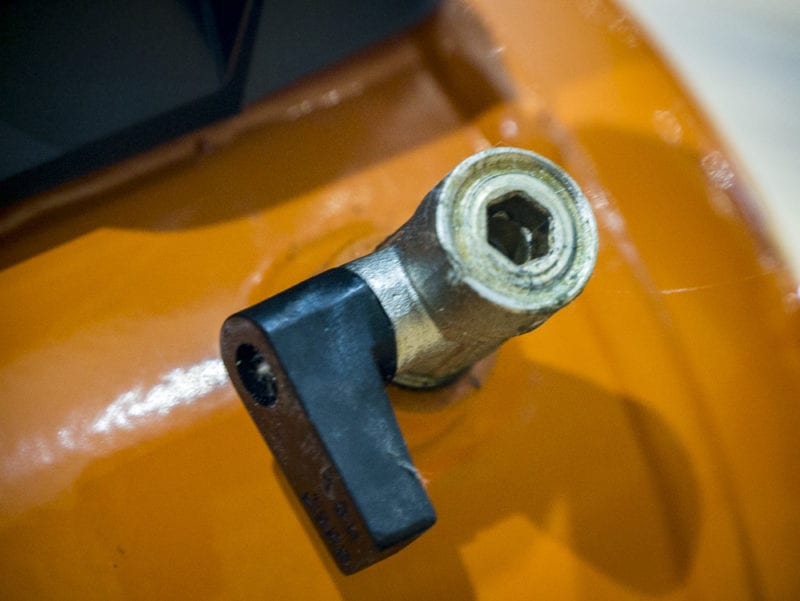



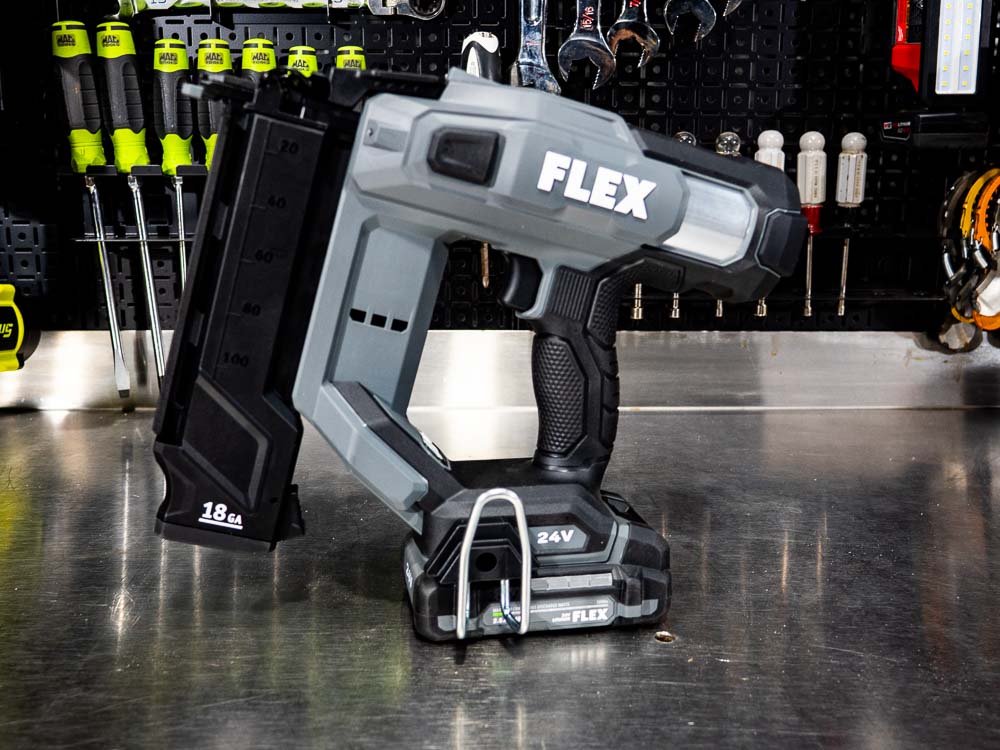
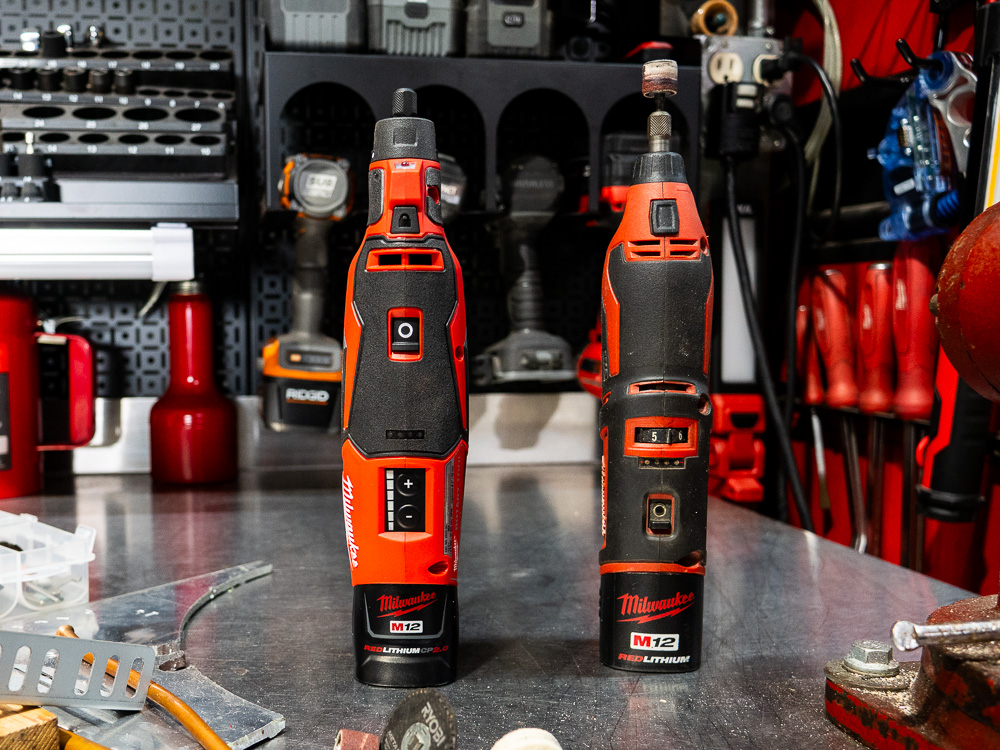


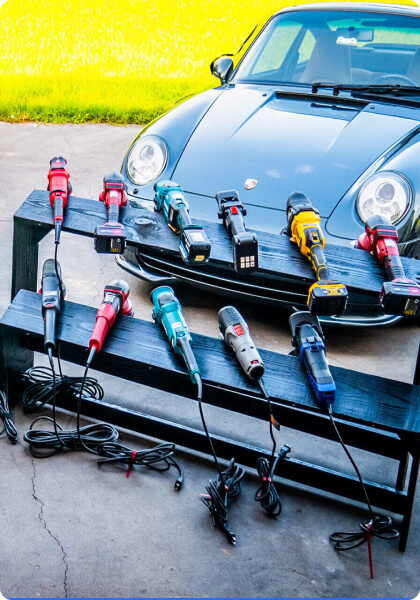
Leave a Reply